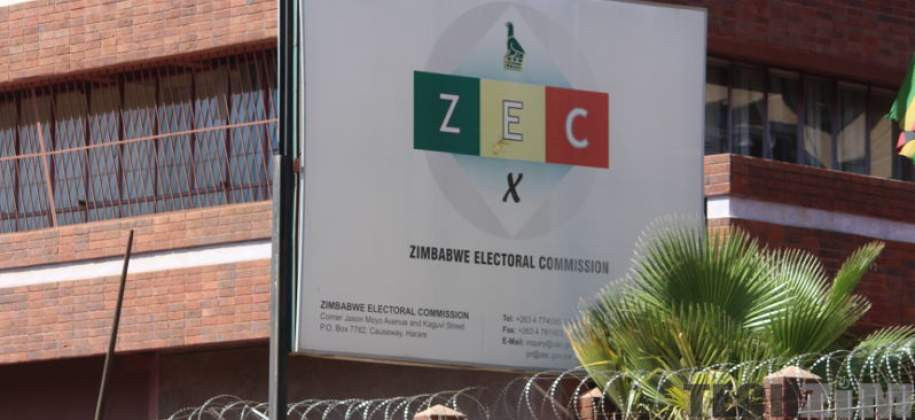
ACCORDING to the World Report on Vision (2019), globally 312 million people below the age of 19 years have a vision impairment.
However, the lack of population-based surveys remains a gap in planning eye care services for children.
Among children, the leading causes of blindness and moderate or severe visual impairment are cataract, uncorrected refractive error, retinopathy of prematurity, congenital ocular anomalies, corneal scarring and cerebral visual impairment.
The Zimbabwe National Eye Health Strategy (2021-2025) estimates 8 000 children below the age of 16 years to have childhood blindness due to congenital cataracts, glaucoma, eye injuries, measles and retinoblastoma.
This figure could be an underestimation given the lack of population-based surveys on child eye health.
Eye conditions such as glaucoma and retinoblastoma, if not treated can lead to permanent vision loss.
In addition, other eye conditions, such as dry eyes, allergic conjunctivitis require care due to irritation or painful symptoms.
Poor nutrition, for example vitamin A deficiency and the lack of immunisation for the prevention of measles infection, significantly contributes to poor vision in children with Africa at higher risk.
- Perspectives: Focus on diabetic eye disease
- Glaucoma the thief of sight
- Crucial role of eye health in children’s development
- Old Mutual partners with The Eye Institute For Community Eye Care Initiative
Keep Reading
The number of children with uncorrected refractive error in particular myopia is expected to increase substantially due to reduced outdoor activities, inadequate eye protection and increase in excessive screen time.
The burden of eye conditions and vision impairment is not borne equally, in addition several children fail to access eye care services due to the high cost of services, distance to health facilities and overwhelmed health facilities that do not consider the long hours of waiting.
Poor vision among children affects their physical, cognitive and social development, leading to lifelong consequences.
Children experiencing poor vision will struggle to achieve their developmental milestones, which at times can be misinterpreted as intellectual disabilities.
Uncorrected vision problems interfere with learning and performing daily activities leading to poor education outcomes, low self-esteem further affecting the quality of life.
Within education settings, children with poor vision will experience challenges reading, writing, walking to school, identifying objects or interacting with friends.
More often children experiencing visual impairment are called ‘names’ and experience stigma because of their poor performance in school.
Visual functioning is an important element for academic performance in school-aged children which may also affect their well-being and hinders productivity and opportunities throughout their adult life.
Hence the vision loss in children is not just a health issue but presents economic costs.
Children experiencing severe visual impairment will require assistance from family members or carers.
Further assistive technologies and rehabilitation services are required to support daily living activities and education, further straining the family income.
While effort is made to provide spectacles in addressing refractive error in school aged children, stigma associated with spectacle wear has restricted participation and led to low-self-esteem.
Children adapt to eye conditions until the situation worsens leading to delayed interventions and poor quality of life. In most cases children and parents are not aware of the reduced visual functioning; therefore, routine eye screening and eye examinations are important for detecting and addressing the eye conditions before the quality of life is compromised.
Recommendations
Considering the increase in the number of children and adolescents with un- corrected refractive error and other eye conditions, population-based planning for eye care services
Such programmes should take into consideration school-based programmes that catalyse the effective delivery of eyecare services for children.
School-based programmes are recommended as a low-cost intervention for facilitating refraction services and providing spectacles considering the number of school aged children with uncorrected refractive error.
Eye health programmes should include promotion and health education to promote access, enforce good health practices and increase the demand for services.
Education and awareness will address any misconceptions around eye care services and spectacle wear for children. Visual rehabilitation is essential for children with poor visual outcomes who require further assistance to strengthen their visual function.
Eye care services for children should be comprehensive by providing for refractive correction and vision screening including assistive technology such as spectacles or low vision devices to achieve a good outcome.
The integration of primary eye care into primary health care will strengthen the identification of children, who require eye care services, and this will also entail that eyecare services will be provided within communities to enhance access.
Referral pathways should take into consideration the scheduling of appointments and follow-up reminders to enable effective coordination of services.
Primary health professionals should be capacitated to support the early identification and referral of children who require further management.
Parents have a role to play in managing screen time for their children to reduce eye strain and potential eye problems. Parents should not only be involved in educating their children on the importance of eye health but should also contribute to the design and implementation of eye care programmes for children.
Promoting a parent/ child centred approach in the provision of eyecare services will increase the uptake of services and demystify misconceptions.
The integration of technology such as Peek acuity (mobile phone technology) will enhance the effectiveness of vision screening among school children, improve follow-up and data management, establishing a mechanism for continuity of care.
The cost of services should not be a barrier for accessing this essential service, therefore, health financing should be considered to make eyecare services for children accessible and affordable.
Considering the inequities experienced in accessing eyecare services the provision of subsidised services should be prioritised in partnership with other key stakeholders.
Despite some of the challenges presented in accessing eyecare services for children, emphasis should be placed on engaging different players to address the gaps and this includes coordinating across the sectors of health, education and the private sector to support service delivery.
The coordination between the Ministry of Health and Child Care and the Ministry of Primary and Secondary Education remains essential in the provision of eye care services for children particularly in facilitating school-based programmes.
The provision of quality eyecare services for children remains a priority for the achievement of the sustainable development goals and universal health coverage.
- Tigere is a development practitioner and writes in her personal capacity. These weekly New Horizon articles, published in the Zimbabwe Independent, are coordinated by Lovemore Kadenge, an independent consultant, managing consultant of Zawale Consultants (Pvt) Ltd, past president of the Zimbabwe Economics Society and past president of the Chartered Governance & Accountancy Institute in Zimbabwe. — [email protected] or +263 772 382 852.











